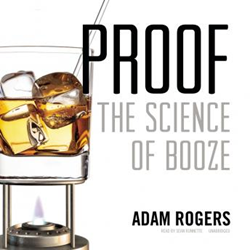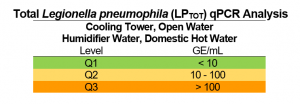Group A Streptococcus Outbreak
Published: March 10th, 2017
Revised: February 23rd, 2023
On March 17, 2016, TPH (Toronto Public Health) declared an outbreak of Group A Streptococcus in Toronto’s largest homeless shelter.
The Group A Streptococcus (GAS) bacterium can cause many different infections that range from minor illnesses (strep throat, scarlet fever) to very serious and deadly diseases (post-streptococcal glomerulonephritis) that can lead to flesh-eating disease, meningitis or sepsis.
Although the number of infected persons were declining from the beginning of the outbreak in March to September, TPH were still finding new carriers of the bacterium from routine screenings of both employees of the shelters as well as their patrons. The first attempt to mitigate the outbreak was unsuccessful due to the lack of eliminating the environmental reservoir, the homeless shelter itself – as like with many bacteria, GAS can survive on hard surfaces touched by infected persons.
Sporometrics was pleased to lend our efforts to aid in the containment of this outbreak by determining the presence of GAS in various places to target the problem areas of infection such as the lockers, cots, tables and floors for proper cleaning and disinfection.
Mycobacterium chimaera qPCR [MC]
Published: March 10th, 2017
Revised: March 21st, 2023
Background
Mycobacterium chimaera (M. chimaera) is a non-tuberculous Mycobacterium (NTM) implicated as a causative agent of a small number of infections post-surgery. NTM are common inhabitants of the environment and have been cultured from water, soil, and animal sources worldwide. They are known to be opportunistic pathogens, mostly affecting the immunocompromised or immunodeficient. (more…)
Legionella pneumophila qPCR [LQPCR]
Published: September 25th, 2015
Revised: March 3rd, 2023
Quantitative real-time PCR (qPCR) DNA-based method specifically for testing Legionella pneumophila in water samples that has the advantage of much greater sensitivity coupled with the potential to provide results in as little as 24 hrs after submission to the lab.
The method involves DNA extraction and DNA testing by quantitative polymerase chain reaction (qPCR). This method has been extensively validated, and has been used widely in Europe for several years. While this test cannot differentiate between active colonization and residual DNA from dead cells, its strength is as a rapid, highly conservative screen for this important pathogen to guide urgent public health decision-making. When rapid turn-around-time and definitive, accurate detection and precise quantification are required, our Legionella pneumophila quantitative (real-time) PCR DNA-based test is the recommend choice.
When to choose qPCR Legionella pneumophila water test
QPCR rush results can be available within 24 hrs or less. Our regular turn-around-time is typically 48 hrs. Most methods for testing fluids for L. pneumophila rely on culture. Although culture-based methods remain the current gold-standard means of determining the presence of this bacterium, this technique has poor sensitivity (negative results cannot reliably predict the absence of contamination), and they typically require 10-14 days to complete testing. This method has been extensively validated, and has been used widely in Europe for many years; it was approved in 2006 by the French Association of Normalization (AFNOR), a parallel standards body to the Canadian Standards Association (CSA). Since 2012, Public Health Ontario changed to a qPCR test for Legionella for lower respiratory tract specimens.
New guideline values are provided in Public Works and Government Service’s MD 15161 – 2013 ”Control of Legionella in Mechanical Systems Standard for Building Owners, Design Professionals, and Maintenance Personnel, Addendum C”, published in March 2016. These guideline values apply to Normal Operation Mode only, for Emergencies and /or outbreaks of disease, additional assessment and measures are required. As illustrated in the table below test levels are the same for all water sources, however, recommended actions may differ depending of the water source.
Sample collection procedure
- Collect water (a 500 mL bottle with preservative is provided by Sporometrics) in sterile, screw-top bottles. For water sources expected to contain disinfectant chemicals such as chlorine, the collection container should include a suitable preservation buffer (the US-CDC recommends sodium thiosulfate to a final concentration of 0.1 M). Sporometrics provides sample collection containers to meet your needs. Please contact us prior to sampling to make arrangements.
- Collect culture swabs of internal surfaces of faucets, aerators, and shower heads in a sterile, screw-top container (e.g., 50 mL plastic centrifuge tube, with or without preservation buffer, according to the above guidance). Submerge each swab in approximately 5 mL of sample water taken from the same device from which the sample was obtained.
- Transport samples to the laboratory as soon as possible after collection. Samples may be transported at room temperature but must be protected from temperature extremes. Samples not processed with 24 hours of collection must be refrigerated.
Laboratory code: LQPCR
Service options
PROOF: The Science of Booze
Published: September 29th, 2014
Revised: September 29th, 2014
 In a follow-up to Adams’ WIRED article “The Angel’s Share”, the Distillation chapter of Proof tells the story of how Sporometrics’ Dr. James Scott found himself studying mycology and delves deeper into the mystery of the whiskey fungus he investigated.
In a follow-up to Adams’ WIRED article “The Angel’s Share”, the Distillation chapter of Proof tells the story of how Sporometrics’ Dr. James Scott found himself studying mycology and delves deeper into the mystery of the whiskey fungus he investigated.
Proof expands upon Adam Rogers’ 2011 WIRED magazine article “The Angel’s Share”; the story of Sporometrics’ Dr. James Scott’s discovery of not just a new species, but a completely new genus of fungi, identified on trees, street signs, and buildings surrounding whiskey warehouses in Lakeshore Ontario, then around distilleries across the globe. The unmasking of the whiskey fungus Baudoinia compniacensis is just one of dozens of tales Rogers tells as he uncovers the science of alcohol production, powered by physics, molecular biology, organic chemistry, and a bit of metallurgy-and our taste for the products is a melding of psychology and neurobiology.
Click for more info >
Babies, pets and house dust
Published: March 16th, 2014
Revised: July 21st, 2014
 Using cutting edge high through-put DNA sequencing, Sporometrics CEO Dr. James Scott and his colleagues investigated the bacterial make-up of faeces from young babies and the homes where the babies lived.
Using cutting edge high through-put DNA sequencing, Sporometrics CEO Dr. James Scott and his colleagues investigated the bacterial make-up of faeces from young babies and the homes where the babies lived.
Scott’s group found a significant overlap in bacterial communities in a baby’s faeces and dust from their home, suggesting that a baby may be sharing their gut bacteria with the environment and vice versa.
This finding may have long-ranging implications on how our environments may influence our lives. How much of a personal imprint do we leave on our home? When we move to a new home, does the microbial imprint of the former occupants have the potential to affect us? And are these effects good or bad? Sorting out these interesting questions will be the focus of Scott’s future research.
View the full PDF article >
Reference: Konya T, Koster B, Maughan H, Escobar M, Azad MB, Guttman DS, Sears MR, Becker AB, Brook JR, Takaro TK, Kozyrskyj AL, Scott JA, and the CHILD Investigators. 2014. Associations between bacterial communities in house dust and infant gut. Environmental Research 131: 25-30. doi: 10.1016/j.envres.2014.02.005.






